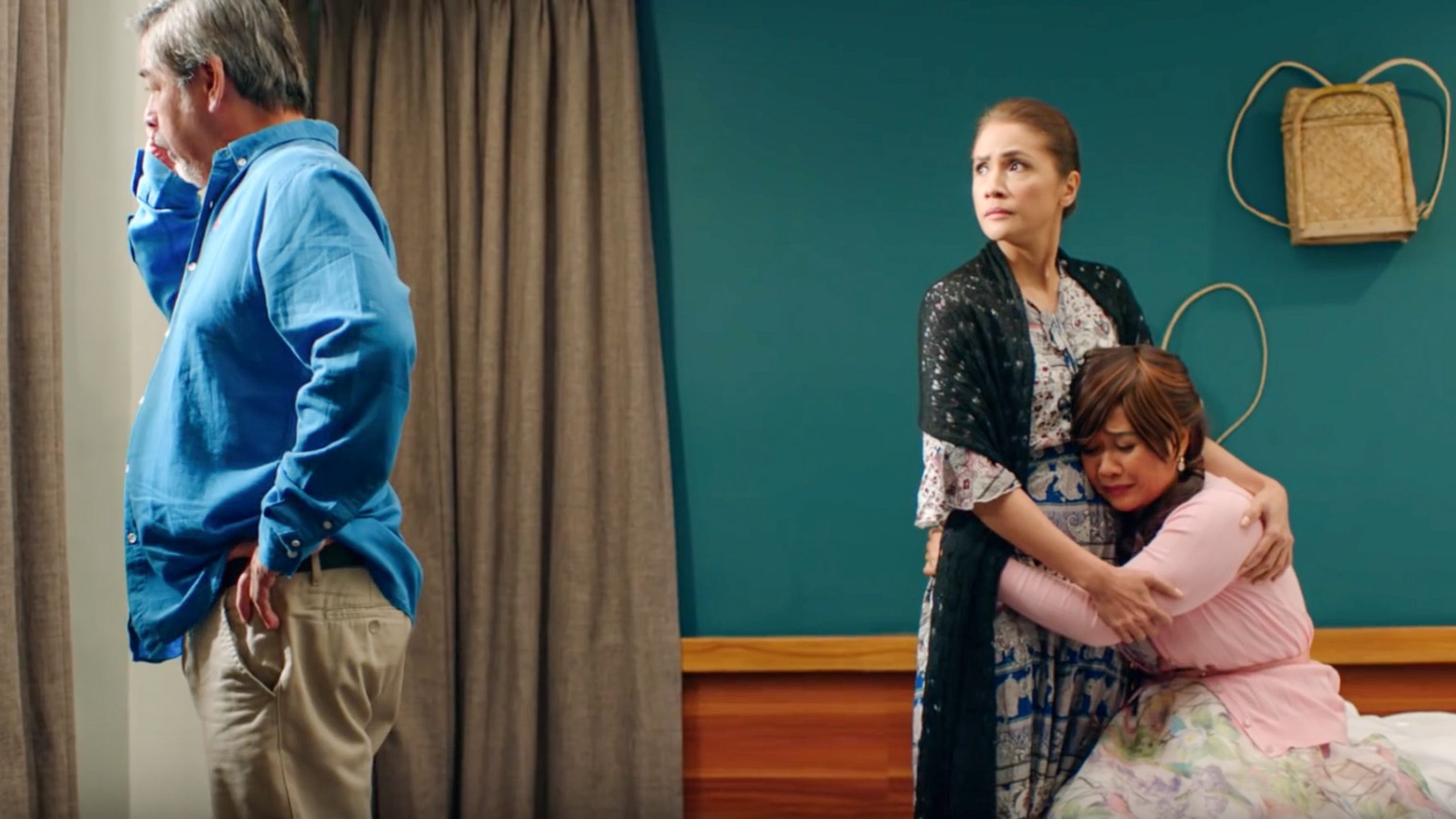SUMMARY
This is AI generated summarization, which may have errors. For context, always refer to the full article.

Marlon Rivera’s Ang Babae sa Septic Tank 2: #ForeverIsNotEnough starts off several years after the first movie ended.
Rainier (Kean Cipriano) is now a laureled director. His then quiet production assistant Jocelyn (Cai Cortez) is now an excessively glib producer. Domingo has just returned from a self-imposed sabbatical, ready for an explosive comeback. They offer her a movie, a love story inspired by Rainier’s own crumbling marriage, which she wants to be part of except that she has several suggestions that all run counter to Rainier’s artistic and personal intentions.
Funny to the core

If there is one thing that most viewers will remember from Marlon Rivera’s Ang Babae sa Septic Tank 2: #ForeverIsNotEnough, it is that scene where Eugene Domingo, covered only by a towel, telling her 3-person audience the 3 ways to act heartbroken. (READ: MMFF 2016: ‘Ang Babae Sa Septic Tank 2’ tackles the making of a romcom)
It is a riotous scene, funny to the core.
Domingo, who plays the same hilariously histrionic version of herself from the first movie, wholeheartedly commits to Chris Martinez’s cleverly designed script that spells out his stark observations on how commercial romantic movies are so formulaic that even the performances in those films can be categorized.
Loud and brazen, the scene sums up most of the pleasures of the film. However, it also exposes its most apparent weakness, which is its reckless reliance on Domingo and the symbolic character she boisterously plays to entertain and deliver the film’s message.
Repeated antics

Septic Tank 2 repeats the antics of its predecessor. As Domingo offers her advice, the film switches from the sterile interiors of the spa where they ironically deliberate their creative differences to Baguio where the characters and moods change as often as Domingo changes her mind.
Simply put, the film is mostly a sequence of scenes where Domingo’s plebeian ideas are pitted with those of Rainier, who has been changed by marital conflict – from being the plainly ambitious filmmaker of the first film into an artist who only wants to truthfully convey his heartaches. In so doing, it explores the jarring and conflicting goals of filmmaking.

Unfortunately, Domingo is still written bereft of any plausible humanity outside the need to return to show business. The film however utilizes her to be the messenger of everything that is wrong, absurd and facile about Filipino commercial cinema. This is essentially the reason why the film ends with her titular comeuppance for supposedly preferring big studio clichés and formulas to Rainier’s heartfelt sincerity.
Sadly, it is all still a very simplistic take on the dichotomies that pervade Philippine cinema.
By having a single character become the sole target for all that is supposedly wrong and creatively bankrupt in the industry, the film eschews everything else, reducing the discourse into a dinner-time argument about the need of films to either be seen by many or to convey a personal truth. The film ends up becoming just an extravagantly staged debate that is skewed in favor of the sympathetic filmmaker with pure intentions as opposed to the demanding actress who is in it for fame and glory.
Scraping the surface

Nevertheless, Septic Tank 2 manages to entertain in parts.
While it only scrapes the surface of what it wants to convey and explore, it still brings to the fore issues that are worth discussing. – Rappler.com
 Francis Joseph Cruz litigates for a living and writes about cinema for fun. The first Filipino movie he saw in the theaters was Carlo J. Caparas’ ‘Tirad Pass.’ Since then, he’s been on a mission to find better memories with Philippine cinema.
Francis Joseph Cruz litigates for a living and writes about cinema for fun. The first Filipino movie he saw in the theaters was Carlo J. Caparas’ ‘Tirad Pass.’ Since then, he’s been on a mission to find better memories with Philippine cinema.
Add a comment
How does this make you feel?
There are no comments yet. Add your comment to start the conversation.